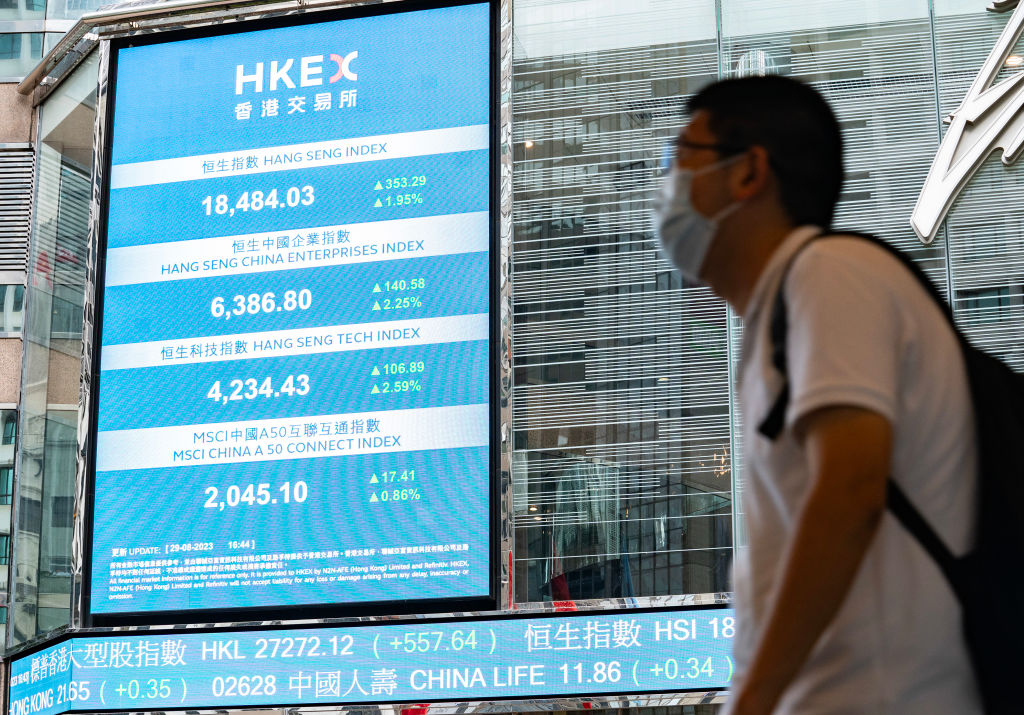Asian share markets rallied on Monday as investors looked forward to a rate cut in Europe, and quite possibly Canada, as the next step in global policy easing, though sticky inflation threatens to make the process a drawn out affair.
There was also better news from China as the private Caixin survey showed a pick-up in its main factory index to a two-year top of 51.7 in May, from 51.4 in April.
Japan’s factory activity expanded for the first time in a year in May, while activity in South Korea grew at the fastest pace in two years.
All of which helped MSCI’s broadest index of Asia-Pacific shares outside Japan bounce 1.4%, having slid 2.5% last week. Chinese blue chips added 0.3%.
Japan’s Nikkei rose 1.1%, after rebounding from one-month lows on Friday, while South Korea gained 1.8%.
South Korean President Yoon Suk Yeol on Monday flagged the possibility of a vast amount of oil and gas reserves in the sea off the country’s east coast.
Indian markets are waiting to see if Prime Minister Modi will expand his alliance’s majority in parliament when election results are released on Tuesday, amid speculation this would lead to more economic reforms.
EUROSTOXX 50 futures climbed 0.9% and FTSE futures 0.7% as the risk-on mood spread.
Month-end flows saw Wall Street stage a late rally on Friday and left the Nasdaq up almost 7% for May. Early on Monday, S&P 500 futures ESc1 were up 0.2%, with Nasdaq futures adding 0.1%.
The prospect of lower borrowing costs globally has been generally positive for equities.
The European Central Bank (ECB) is considered almost certain to trim rates by a quarter point to 3.75% on Thursday, the first time in history it would have eased ahead of the U.S. Federal Reserve.
However, a surprisingly high reading for euro zone inflation out last week blunted hopes for a rapid round of reductions and markets have 57 basis points of easing priced in for this year.
“The probability of back-to-back cuts now appears very low, putting the focus for a second move on September,” said Bruce Kasman, head of economic research at JPMorgan.
“We suspect President Christine Lagarde will signal that the direction of rates is downward next week, but the policy statement will emphasize that future moves are data-dependent, and there is no pre-commitment to a particular rate path.”
Markets also imply around an 80% chance the Bank of Canada will cut at its meeting on Wednesday and 59 basis points of easing this year, though analysts are hopeful the easing will be even deeper.
Investors are a lot less dovish on the Fed, seeing little prospect of a move until September and even that is far from a done deal.
The outlook could change this week given data due includes key surveys on services and manufacturing, and the May payrolls report where unemployment is seen holding at 3.9% as 190,000 net new jobs are created.
In forex markets, the Japanese yen remains the weakest of the majors, though the government is clearly prepared to spend big to slow its slide. Data out last week showed Tokyo spent 9.788 trillion yen ($62.27 billion) on currency intervention between April 26 and May 29.
The dollar stood at 157.09 yen JPY=EBS, just off last week’s peak of 157.715. The euro held firm at $1.0855 EUR=EBS, still benefiting from the EU inflation report, but faces resistance at $1.0895.
Gold was a shade firmer at $2,330 an ounce XAU=, having now rallied for four months in a row helped in part by buying from central banks and China.
Oil prices recovered from an early dip to push higher on Monday after OPEC+ agreed on Sunday to extend most of its oil output cuts into 2025, though some cuts will start to be unwound from October 2024 onwards.
Brent rose 38 cents to $81.49 a barrel, while U.S. crude firmed 39 cents to $77.38 per barrel.
(Reuters)



















